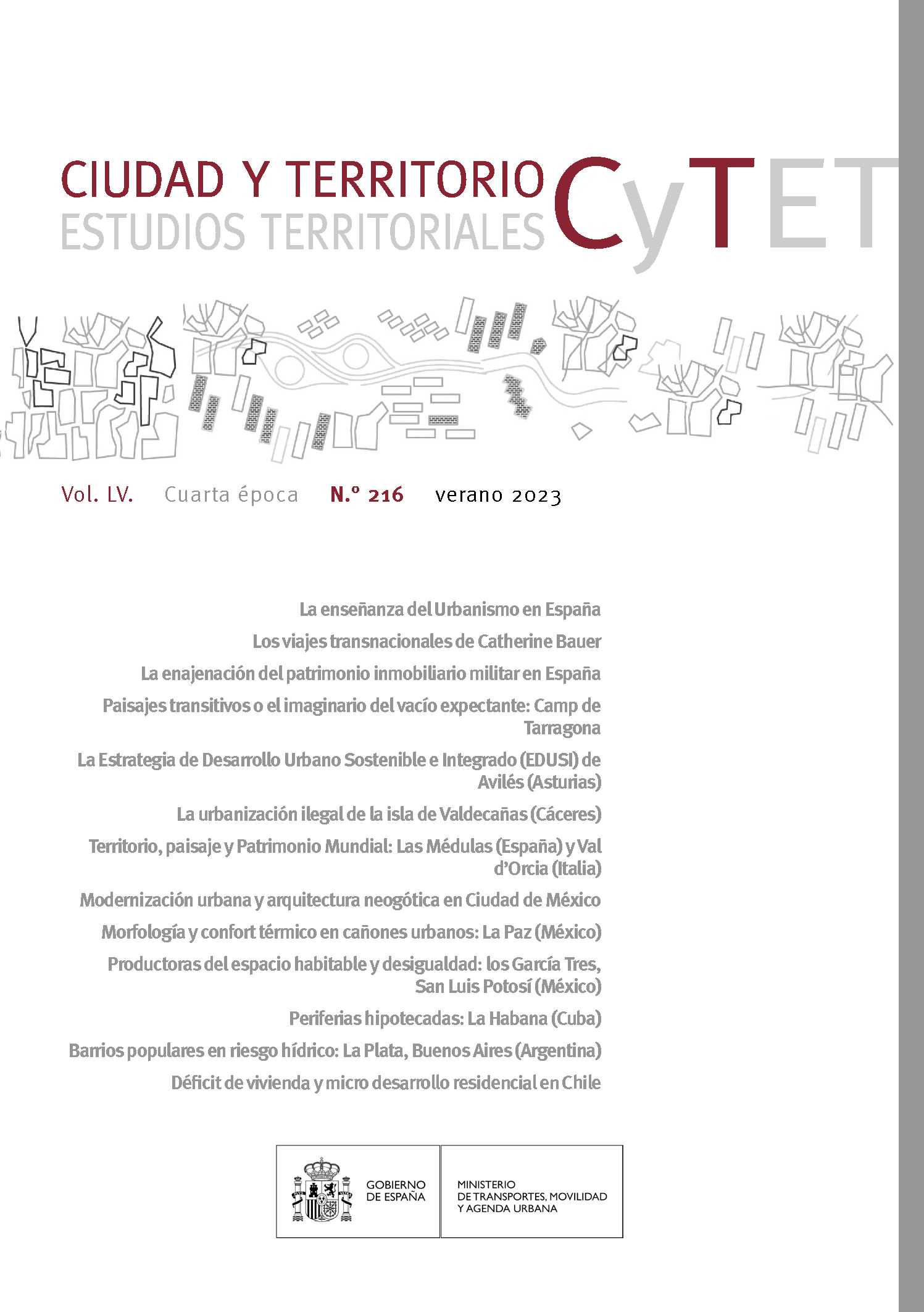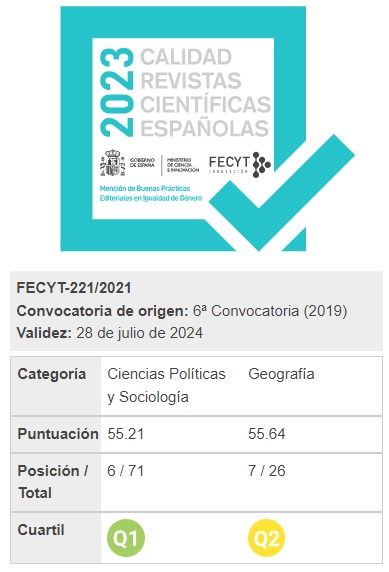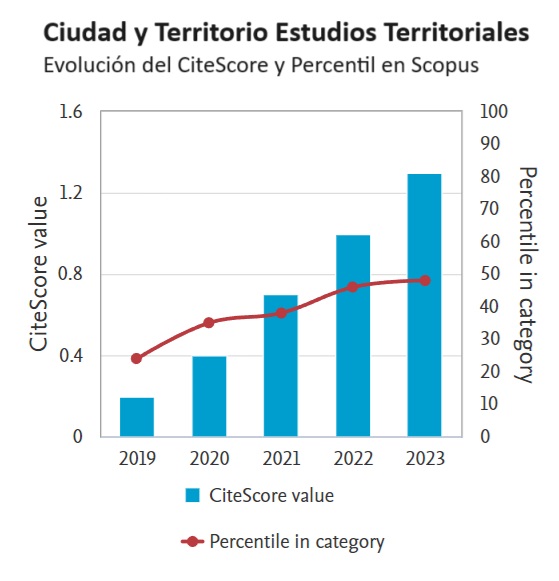The illegal urbanization of the island of Valdecañas (Cáceres): total demolition by Supreme Court ruling of 2022
DOI:
https://doi.org/10.37230/CyTET.2023.216.6Keywords:
Valdecañas Island, Urbanization, Illegality, Judgment, DemolitionAbstract
The judgment of February 9, 2022 of the Supreme Court, which orders the total demolition of the urbanization on the artificial island of the Valdecañas reservoir (Cáceres), represents the largest demolition in Spain of illegal constructions, with the singularity that those responsible do not they are neither a private company nor individuals, but the Administration. It contains important repercussions for Urban Planning in Spain: firstly, because it will prevent the interested interpretations of the regionals governments that have been urbanizing the "protected non-urbanizable land" through different alibis, after having included 23% of the Spanish territory within the Natura 2000 Network, with or without environmental values; second, because the jurisprudence established by the Supreme Court closes the door - which the Superior Court of Justice of Extremadura had left open in the first instance - so that illegal constructions could not be demolished, accepting the excuse of their high cost, which would have made it impossible to legal concept of “reparation of the damage caused”.
Downloads
References
Campesino, A.J. (2010-2012): Ordenación territorial de la Extremadura democrática. En F. Rodríguez Martínez (Coord.), El Estado de la Ordenación del Territorio en España [Monográfico]. Cuadernos Geográficos, 47, 553-581. https://revistaseug.ugr.es/index.php/cuadgeo/article/view/619/707
Campesino, A.J. & Jiménez, V. & Salcedo, J.C. (2018): Extremadura: Tres décadas de autogobierno sin Directrices de Ordenación Territorial. Revista de Estudios Extremeños, 74(1), 517-552. https://www.dip-badajoz.es/cultura/ceex/reex_digital/reex_LXXIV/2018/T.%20LXXIV%20n.%201%202018%20en.-abr/94407.pdf
Corchero, M. & Sánchez, L. (2014): El control judicial del urbanismo de interés regional. Práctica urbanística: Revista mensual de urbanismo, 128, pp. 28-56.
Delgado, C. (2012): Secuelas territoriales de la ‘burbuja inmobiliaria’ en las áreas protegidas litorales españolas. Ciudad y Territorio. Estudios Territoriales, 44(174), 615-638. https://recyt.fecyt.es/index.php/CyTET/article/view/76156
Jiménez, V. (2018): Urbanizaciones ilegales en Extremadura. La proliferación de viviendas en el suelo no urbanizable durante el periodo democrático [Tesis Doctoral. Programa de Doctorado en Desarrollo Territorial Sostenible, Universidad de Extremadura]. Premio Extraordinario de Doctorado 2018 (Inédita). (Dir. A.-J. Campesino) http://hdl.handle.net/10662/8303
Jiménez, V. & Campesino, A.J. (2015): Los Proyectos de Delimitación de Suelo Urbano y la desprotección del suelo rural en la provincia de Cáceres. En J. De la Riva & P. Ibarra & R. Montorio & M. Rodrigues (Eds.), Análisis espacial y representación geográfica: innovación y aplicación (pp. 159-168), Universidad de Zaragoza, AGE.
Jiménez, V. & Campesino, A.J. (2016): Proyectos de (dudoso) interés regional. Intromisión en la política municipal de vivienda en Extremadura. Boletín de la Asociación de Geógrafos Españoles, (72), 327-347. https://doi.org/10.21138/bage.2343
Jiménez, V. & Campesino, A.J. (2018): Al margen de la ley: rururbanización en Extremadura. En F. Cebrián (coord.), Ciudades medias y áreas metropolitanas. De la dispersión a la regeneración (pp. 261-279), Ciudad Real, Ediciones de la Universidad de Castilla-La Mancha.
Mora, J. (2020): El complejo turístico de ‘Marina Isla de Valdecañas’ (Cáceres). Impacto sobre la población y actividades económicas. En S. Rodríguez & J.M. Valadés (Coords.), La cultura vivida. Homenaje al profesor Javier Marcos Arévalo (pp. 395-405), Badajoz, Fundación Caja Badajoz.
Salcedo, J.C. (2014): Patrimonio arquitectónico en el territorio: Diagnóstico y propuestas en el caso de Extremadura. En A.-J. Campesino & J.M. Jurado (Dirs.), Turismo de Frontera III, productos turísticos de la Raya Ibérica, Universidad de Huelva, Servicio de Publicaciones.
Salcedo, J.C. & Campesino, A.J. (2015): Marina Isla de Valdecañas (Cáceres): de proyecto de interés regional a liquidación por derribo. ERÍA, Revista de Geografía, 97, 173-188. https://doi.org/10.17811/er.97.2015.173-188
Torres, F.J. (2009): La ocupación del dominio público marítimo-terrestre en España. Investigaciones Geográficas, 50, 63-91.
Published
How to Cite
Issue
Section
License
Copyright (c) 2023 José-Carlos Salcedo

This work is licensed under a Creative Commons Attribution-NonCommercial-NoDerivatives 4.0 International License.
Considering the provisions of the current legislation on Intellectual Property, and in accordance with them, all authors publishing in CyTET give -in a non-exclusive way and without time limit- to the Ministry of Transport, Mobility and Urban Agenda the rights to disseminate, reproduce, communicate and distribute in any current or future format, on paper or electronic, the original or derived version of their work under a Creative Commons Attribution-NonCommercial-NoDerivative 4.0 license International (CC BY-NC-ND 4.0), as well as to include or assign to third parties the inclusion of its content in national and international indexes, repositories and databases, with reference and recognition in any case of its authorship.
In addition, when sending the work, the author(s) declares that it is an original work in which the sources that have been used are recognized, committing to respect the scientific evidence, to no longer modify the original data and to verify or refute its hypothesis. Author(s) also declare that the essential content of the work has not been previously published nor will it be published in any other publication while it is under evaluation by CyTET; and that it has not been simultaneously sent to another journal.
Authors must sign a Transfer of Rights Form, which will be sent to them from the CyTET Secretariat once the article is accepted for publication.
With the aim of promoting the dissemination of knowledge, CyTET joins the Open Journal Access (OA) movement and delivers all of its content to various national and international indexes, repositories and databases under this protocol; therefore, the submission of a work to be published in the journal presupposes the explicit acceptance by the author of this distribution method.
Authors are encouraged to reproduce and host their work published in CyTET in institutional repositories, web pages, etc. with the intention of contributing to the improvement of the transfer of knowledge and the citation of said works.








 Enlace a CyTET en Linkedin
Enlace a CyTET en Linkedin